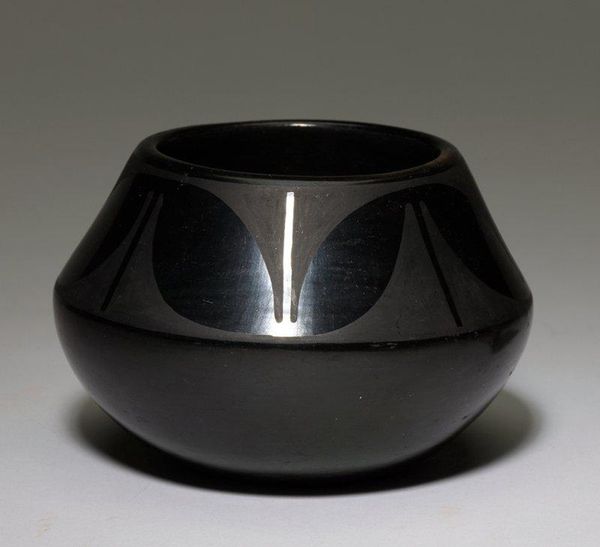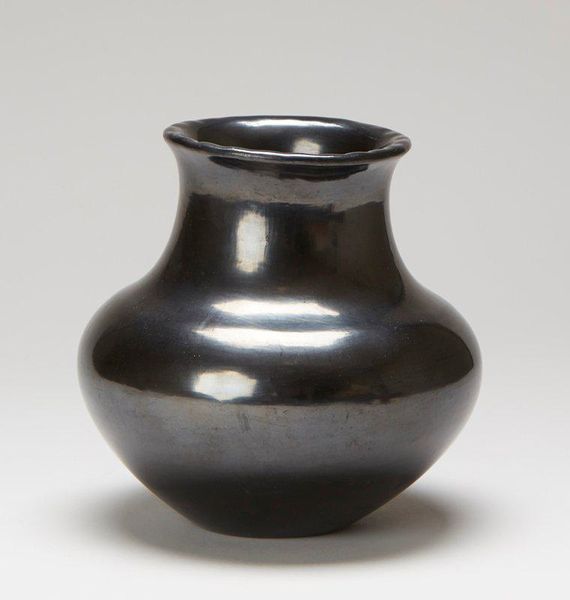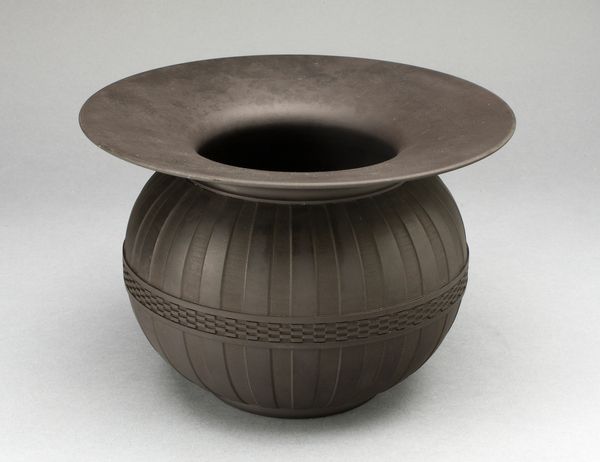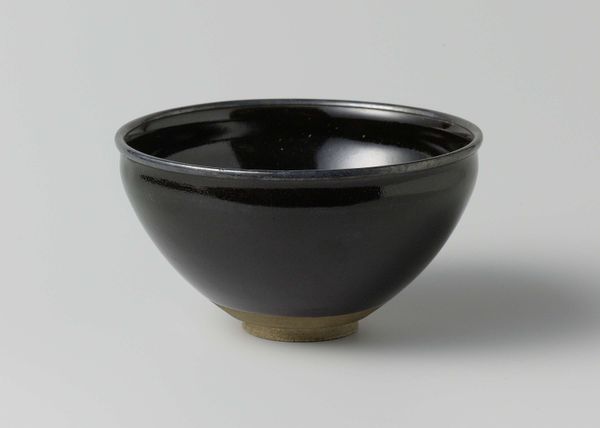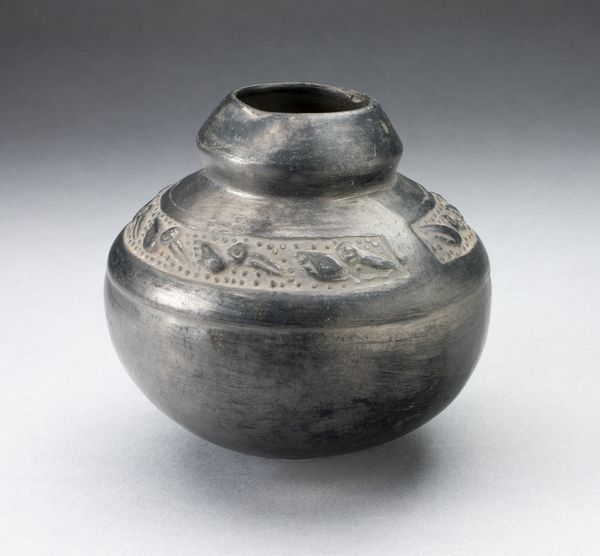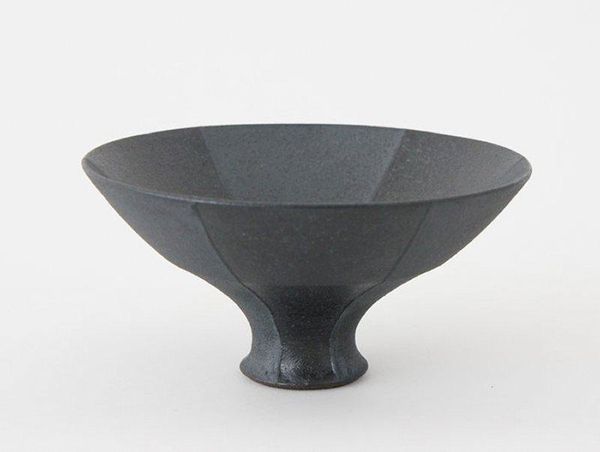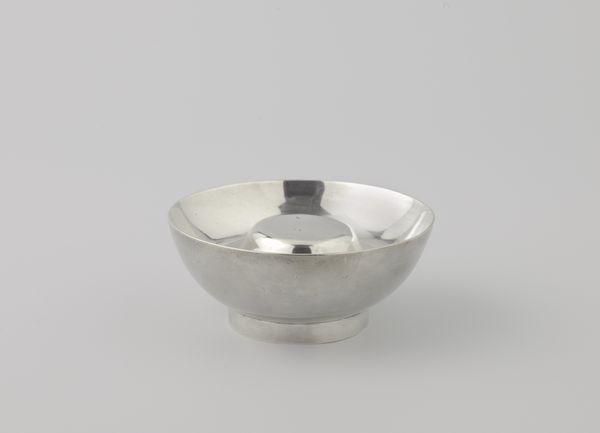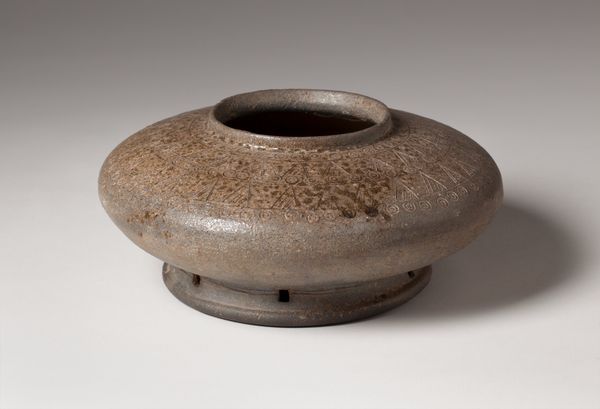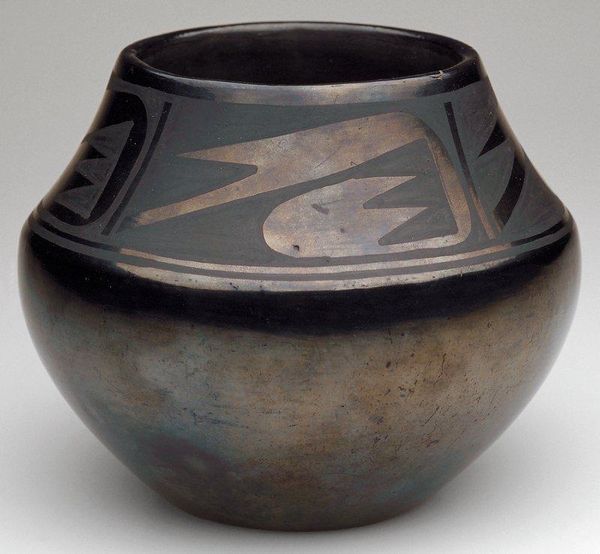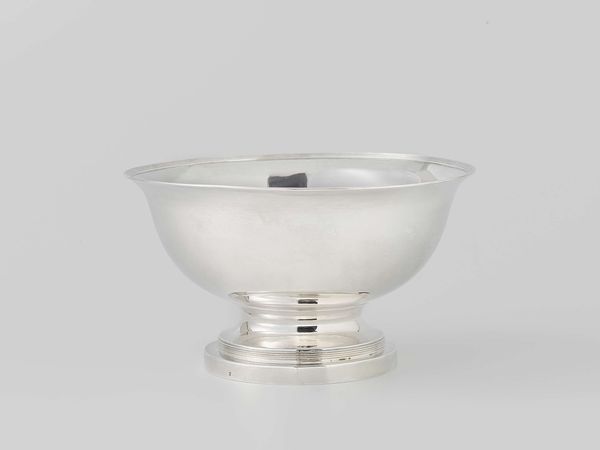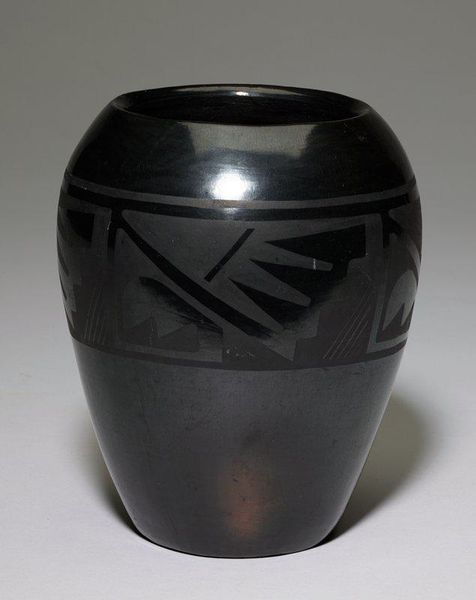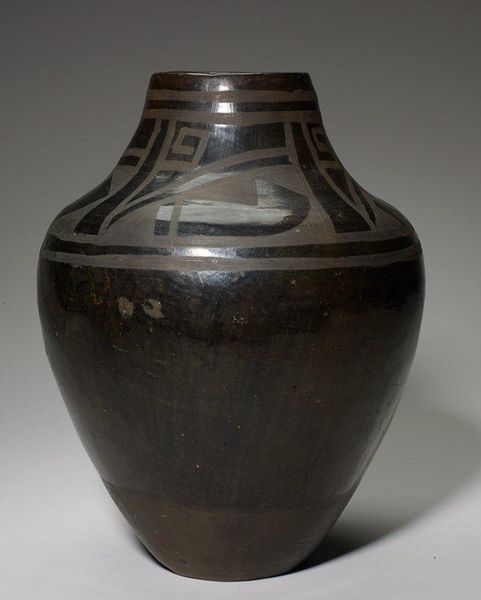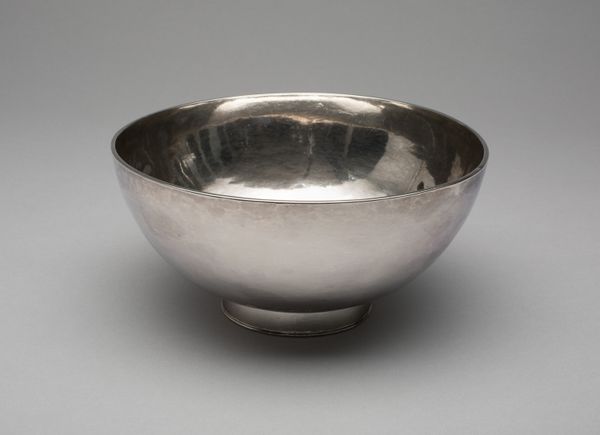
ceramic, earthenware
#
ceramic
#
earthenware
#
ceramic
#
decorative-art
#
indigenous-americas
Dimensions: 3 5/16 × 3 15/16 × 3 15/16 in. (8.41 × 10 × 10 cm)
Copyright: No Known Copyright
Curator: Let’s discuss Maria Martinez’s "Pot," crafted around 1920 and held at the Minneapolis Institute of Art. Editor: Its somber monochrome and rhythmic decorations suggest a reserved, almost introspective mood. Curator: Indeed. The piece showcases the Pueblo pottery tradition. Notice how the earthenware, the very earth itself, is central to both the form and the decoration. Consider how Martinez, of San Ildefonso Pueblo, revived ancient techniques, shaping and polishing the clay by hand. This contrasts sharply with mass production. Editor: I'm intrigued by the contrasting matte and polished surfaces. The matte designs overlaid on the glossy black background evoke feathers. Given that feathers often represent prayers or messages to the spirit world, I wonder about its intended function beyond simple utility. Curator: Excellent point. Consider also how these pots were, in Martinez’s time, gaining popularity among Anglo-American collectors. While upholding ancestral practices, they adapted forms and decorations to the preferences of a broader consumer base, thereby negotiating cultural heritage and market demands. Editor: So, beyond just a container, it is also an artifact loaded with cultural intention and artistry, bridging cultural understanding through a material object. Its dark elegance is very seductive. Curator: Precisely. Studying the labour involved, the earth it came from, and how these enter into systems of trade brings a much broader understanding than simply viewing it as decoration. Editor: Reflecting on our conversation, I am taken with how such a seemingly simple form can tell a compelling story of cultural revival, artistic adaptation, and symbolic communication, inviting us to pause and ponder these intertwined layers of meaning and intention. Curator: And for me, I consider its lasting impact, not merely as art, but as evidence of ongoing dialogues between maker, material, culture, and commerce.
Comments
No comments
Be the first to comment and join the conversation on the ultimate creative platform.
